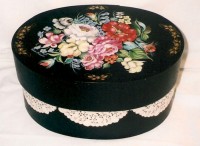My favorite method, which I used exclusively on my quilts, (“If Monet Could Quilt”) for example, is thickening the dyes or dye paints with Sodium Alginate.
Sodium Alginate is a natural product made from seaweed so it doesn’t react with your medium – it just thickens it to the viscosity you want. If you use it to make your paints a heavy cream consistency it holds a hard edge quite well and washes out nicely. It easily accepts being painted over with another color for shading or value changes. It doesn’t matter whether the previous layer is damp or dry, but keep in mind that if the under layer is damp, the chances of bleeding increase. This can be used to your advantage for blending effects like in watercolor painting, but can also ruin a hard edge that you worked so hard to achieve.
Using this method usually makes the use of other resists unnecessary. If you intend to do Imersion Dyeingit should be done prior to painting your design as the sodium alginate will not hold up under extremely wet situations.
The advantage of using sodium alginate is that it is colorless and relatively transparent so that your colors are not altered in the mix – what you see is pretty much what you get, and it dries without cracking.
You can purchase the sodium alginate from places like Dharma Trading Company or Pro Chemical Co – a small pkg. goes a long way. Just remember to add the dye/paint to the thickener and not the other way around or else you end up with too much dye/paint. Ask me how I know. I use small glass custard cups to mix and LV – low viscosity alginate.
If you would like to learn more about using dyes or paints on textiles, I highly recommend Ann Johnston’s book Color by Design. I read this book from cover to cover and taught myself to use fiber reactive dyes to create my quilts. Her recipes and instructions are right on. The link gives you a glimps into this valuable book.
I hope you will try using sodium alginate to achieve the results you need.
Always curious,
Linda


